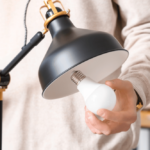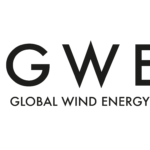Your spring home maintenance should include an energy audit – The Washington Post
Energy Disrupter

“I noticed it right away,” said Karina, 37. “We thought if we turned the heat higher in winter and the air lower in the summer, that would help. We put a fan in one of the bedrooms, and it didn’t help at all.” They wondered: What else we could do?
Their real estate agent had mentioned when they were buying the house, it would be good to replace the insulation in the attic but they hadn’t done it.
Since then, they read about a home energy assessment that their local utility, Pepco, offered. Last November, they decided to move forward.
The couple worked with an approved Pepco contractor, Zerodraft Maryland, which focuses on energy efficiency, and conducted the Home Performance with Energy Star program assessment. For $100, an auditor came to their all-electric townhouse to inspect every part of it, install energy-saving products, including LED lightbulbs, and gave them a detailed report of recommended improvements as well as the program rebates that would be available. Once they upgraded their townhouse, they would receive a certificate from Pepco outlining the changes they made to make their space more energy efficient and more comfortable.
They wanted to spend no more than $3,000 on the improvements.
Their report recommended:
- Air sealing their attic floor.
- Adding new insulation on top of the sealed attic floor.
- Applying spray foam insulation on their basement rim joist and overhanging cantilevered floor.
- Installing a new bathroom exhaust fan and insulating the ductwork around the new fan.
- Adding a new exhaust-fan timer switch to eliminate moisture and ensure that adequate air was being exchanged in and out of the townhouse.
- Upgrading the HVAC system.
Keeping within their budget, the couple moved ahead with all the recommendations except the upgraded HVAC system, which was the most expensive item on the list.
The cost of the energy-saving recommendations was $3,718, and with the rebates, their cost was $2,584.65. Through the Pepco program, the rebates can either be assigned to the homeowner or the contractor. In this case, Zerodraft applied the discounts to the homeowners’ cost, and Zerodraft received the rebates from Pepco.
For Karina and Calvin, the changes were welcome. “It did make a big difference,” Karina said. “I was impressed that I noticed the difference as quickly as I did.” The floors were no longer cold to the touch, she said.
They’ve already noticed dollar savings as well. This past winter, they realized a $30 savings per month in 2022 over 2021, and the savings continued in their March bill but they weren’t as significant. When energy demand is typically higher, the cost per kilowatt hour is higher while in times of lower demand, the cost is lower.
Basically, there are two major reasons people decide to schedule an energy assessment, also called an energy audit, on their home. “Often, it’s comfort that leads to an audit,” said Ryan Meres, program director of the Residential Energy Services Network, which sets standards for how people become certified as a Home Energy Rating System rater.
The other reason is cost savings, a reduction in their energy bills, he said. “You decide which things you implement, which will give you the biggest bang for the buck based on doing the upgrade.”
There are a variety of ways to save energy, and what you choose depends on your home’s needs, what will remedy the problem and your budget.
The amount of energy a household uses depends on its location and climate; the type of home and its physical characteristics; the number, type and efficiency of the energy-consuming devices and how much they are used; and the number of people in the household, according to the U.S. Energy Information Administration.
Experts say heating and cooling consume approximately half of the energy used in your home. For example, water heating consumes between 10 percent and 20 percent. Other appliances, including a dishwasher and washer/dryer, consume between 10 percent and 20 percent, and lighting, approximately 10 percent.
Heating and cooling, “that’s the big target,” said Kurt Pfund, a principal of Zerodraft, who co-founded the company with his father, Chris, in 2008.
There are a variety of ways, Kurt said, to improve heating and cooling:
- Replace the heating and cooling system.
- Tune up the heating and cooling system.
- Increase the efficiency of the home’s ductwork.
- Tighten the home’s “envelope” by finding places where cold air enters the house in winter and warm, humid air gets into the home in summer.
“Tighten up your house by making it much more airtight,” Kurt said. What you can do depends on the home, your budget and the utility programs available to you. “All homes leak to one degree or another,” he said. “Even new construction.”
Unless your home was constructed with energy efficiency in mind, adding more insulation can likely reduce your energy bills, according to the U.S. Energy Department. Older homes typically have less insulation than new construction. Yet adding insulation to a newer home can “pay for itself within a few years,” according to the department.
Area utilities have a range of programs that can improve the energy efficiency of your home. Experts recommend starting with a no-fee audit, and going deeper from there.
Pepco also offers a Quick Home Energy Check-up that is less comprehensive than the assessment Karina and Calvin chose.
Dominion Energy offers the Home Energy Assessment program and the deeper diagnostic Retrofit testing program, according to Michael Hubbard, manager of energy conservation for Dominion Energy in Virginia.
The utility does not dictate to the energy-efficiency vendor what to charge consumers. “A firm may choose to do a free assessment,” but it is not required, he said. “The value to the consumer in the assessment or audit is in the discounted measures via rebates” and in the ongoing savings from any installations, upgrades or tuneups.
Consumers receive a customized report, a guide to future home improvements that can lower energy usage and lower your electric bill in the years ahead, Hubbard said.
Like the Jenkinses, you might not do everything that is recommended immediately, but you can consider some of them for energy improvements later. For now, the boys’ rooms are “much warmer,” Karina said. “[They’re] not frigid.”
Six ways to improve your home’s cooling and heating efficiency
Since heating and cooling consume approximately half of your home’s energy, take these steps to improve the efficiency and cost of keeping your home at just the right temperature, according to the Energy Department.
- Change the air filter regularly. During heavier usage in summer and winter, check it every month, or at least every three months.
- Tune up the HVAC equipment annually. This can improve its efficiency and comfort.
- Install a smart thermostat. It will allow you to control heating and cooling from your smartphone, tablet or computer. Look for an Energy Star-certified smart thermostat.
- Seal heating and cooling ducts. The first place to focus is on ducts that run through the attic, crawl space, unheated basement or garage.
- Consider Energy Star-certified heating and cooling products. Have an HVAC contractor evaluate your current equipment if it is more than 10 years old or isn’t doing the job of keeping your home comfortable.
- Ensure that new equipment is properly installed. Improper installation can reduce system efficiency by as much as 30 percent.
Sources to help you improve the energy efficiency of your home
There are many ways and resources to help make your home more energy efficient and to save money. So much of what you do will depend on the current energy efficiency of your home, a professional energy assessment, recommendations from a certified contractor and your budget.
Some utilities provide energy coaches who will speak with you about steps you can take, energy assessments and more extensive evaluations of the energy efficiency of your home.
Energy Star is a program of the Environmental Protection Agency and the Energy Department, and provides information about energy-efficient products and practices.
In February, the EPA launched the Energy Star Home Upgrade, six electric home improvements that it said can save the average family approximately $500 a year on utility bills:
- An Energy Star-certified air source heat pump for clean and efficient heating and cooling.
- An Energy Star-certified heat pump water heater for super-efficient hot water.
- An Energy Star-certified smart thermostat with smart climate controls.
- High-performing Energy Star certified windows and storm windows.
- A well-insulated and sealed attic.
- An electric vehicle charger-ready home.
The average cost for the entire upgrade would be $15,000 to $18,000, according to the National Renewable Energy Laboratory data the EPA used in its initial analysis. Cost for each upgrade varies based on location, contractor and type of product selected.
To find products, click here. To learn about rebates, click here.
Original Source: https://www.washingtonpost.com/business/2022/04/21/your-spring-home-maintenance-should-include-an-energy-audit/















